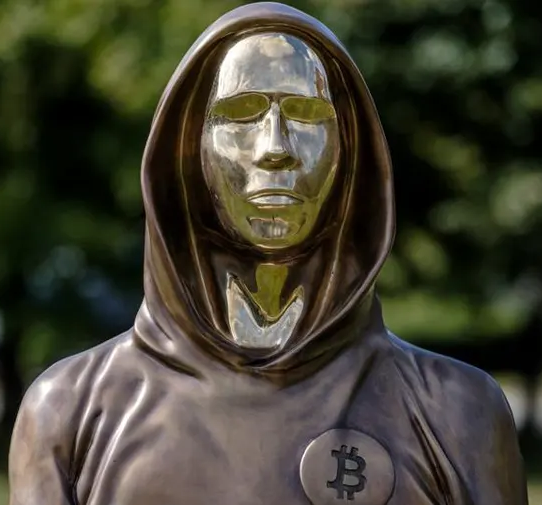Discovering the three pillars of Bitcoin
Introduction: The challenge of Satoshi
Somewhere in anonymity, a brilliant mind pondered a riddle as old as time, yet more relevant than ever: how to create the ultimate form of money. A currency that would transcend the limitations of traditional systems, resist corruption, and adapt to the needs of a rapidly growing digital world.

Satoshi Nakamoto knew that this question required a bold and innovative answer. Creating the perfect currency was not just a technical quest but a profound reflection on the very nature of value, trust, and the systems that govern our societies. To achieve this, Satoshi had to deconstruct the concept of money and rebuild its foundations around three fundamental pillars: energy, time, and information.
The story of Bitcoin begins with a challenge as old as human civilization. Here is the story of this revolutionary invention, where every revelation and every step of Satoshi’s reasoning laid the foundation for a system that continues to transform the world today.
Value: The ultimate goal
Before arriving at the design of Bitcoin, Satoshi identified the fundamental flaws of existing currencies:
Excessive centralization: Fiat currencies depend on central banks, which control their issuance and monetary policy. This centralization creates risks of manipulation, abuse of power, and censorship.
Value dilution: Fiat currencies can be printed in unlimited quantities, causing inflation and eroding citizens’ purchasing power.
Limited access: A significant portion of the world’s population lacks access to banking systems, excluding them from the global economic system.

These limitations underscored the need for an alternative that would eliminate reliance on intermediaries while providing stable and accessible value for all.
A predictable and immutable monetary policy
One of Bitcoin’s fundamental strengths lies in its transparent and unalterable monetary policy:
Absolute scarcity: Unlike fiat currencies, Bitcoin has a capped supply of 21 million units. This digital scarcity makes Bitcoin the rarest element that could ever exist, far beyond the limits of our physical universe.
Regulated issuance: Bitcoins are created at a decreasing rate through the halving mechanism. This process halves miners’ rewards every four years, ensuring a slow and predictable distribution.
Automated rules: All decisions related to Bitcoin’s monetary policy are embedded in its code and applied automatically.
This stability inspires trust, transforming Bitcoin into a reliable store of value in a world marked by economic uncertainty.
Bitcoin as a synthesis of fundamental principles
Satoshi Nakamoto built Bitcoin around the classical economic principles of « good money, » integrating technological advancements to make them even more effective:
Scarcity, Durability, Divisibility, Portability, and Fungibility.
We will see how, by combining these properties, Bitcoin surpasses the limitations of physical and fiat currencies, becoming a currency suited to the digital age.
Bitcoin and economic freedom
Beyond its technical features, Bitcoin is designed as a tool for economic freedom:

Censorship resistance: Bitcoin transactions cannot be blocked, altered, or reversed. This makes it a particularly useful currency in environments where financial systems are restrictive or heavily monitored.
Individual autonomy: By owning the private keys associated with their bitcoins, users have absolute control over their money without needing a bank account.
Financial inclusion: Bitcoin is accessible to anyone with an internet connection, providing an alternative for unbanked populations or those excluded from traditional systems.
These properties make Bitcoin much more than just a currency:
It becomes a vehicle for individual empowerment and protection against institutional abuses.
But let us delve deeper to understand what makes Bitcoin so exceptional.
II. Energy: The source of value
Satoshi’s quest began with a fundamental observation: all forms of value must be anchored in the real world. Throughout history, this connection has often been established through energy, whether used to extract gold, build infrastructure, or produce goods. But how could this concept be transposed to the digital realm, where materiality seems absent?
Observing the physical reality
Satoshi understood that money needed to have intrinsic value or at least a guarantee of effort. In the past, goods like gold or silver fulfilled this role. Their natural scarcity and the energy required for their extraction gave them universally recognized value. However, these material currencies had their limitations: they were difficult and slow to transport and poorly suited to a globalized world.
For Satoshi, energy represented an incontestable universal constant. Whether in the physical or digital world, energy was the ultimate measure of tangible effort. What if energy could be used to guarantee the value of electronic money, just as gold once did in the material world?
Satoshi's thinking
This idea led Satoshi to integrate proof-of-work as we know it today. The concept was both simple and revolutionary: the energy invested in solving a complex calculation would serve as irrefutable proof that something of value had been produced. Each block of transactions in the system would be validated by measurable effort, ensuring that only legitimate transactions were recorded on the blockchain.
In this model, miners use computational power to solve mathematical puzzles. This process requires significant electricity consumption, ensuring that the network is grounded in a physical element. More importantly, this energy consumption secures the network against attacks and guarantees the immutability of transactions.
Proof-of-work was a revelation. By tying energy to a digital currency, Satoshi found a way to give Bitcoin a cost: the cost of energy.


Energy as a Basis for Trust
By linking Bitcoin to energy, Satoshi created a system where trust no longer depended on human institutions but on a natural law: the conservation of energy. No one could cheat or manipulate the network without investing massive resources, making any attempt at fraud economically irrational.
This use of energy introduced a new paradigm: every Bitcoin unit is anchored in physical reality. Bitcoin requires real effort for every unit created. This connection to energy gives Bitcoin its digital scarcity and resistance to manipulation.
Conclusion
By placing energy at the core of Bitcoin, Satoshi laid the foundation for a digital monetary system with a tangible and measurable cost. He transformed a universal resource into a guarantee of trust, eliminating the need for intermediaries or authorities. This bold idea was just beginning to take shape, but it already opened the door to a currency capable of rivaling gold while adapting to the digital age.
The next challenge for Satoshi would be to solve another fundamental problem: time.
III. Time: The immutable order
After anchoring Bitcoin in reality, Satoshi Nakamoto faced another fundamental challenge: how to introduce the concept of time into a decentralized digital network? Unlike the physical world, where time follows a natural order, the digital world is chaotic. Data can be copied, altered, or rearranged without temporal constraints. Yet, currency cannot exist without a clear chronology: each transaction must have a before and an after. Without this, it would be impossible to ensure that a single unit of currency is not spent twice.
The absence of time in the digital world

In a centralized system, such as a bank, time is established by a single authority that timestamps each transaction. But in a decentralized system, where no central server exists, this approach is impossible. Every participant in the network can have a different version of the order of transactions, potentially leading to conflicts.
Satoshi realized that to solve this problem, he needed to create a « digital arrow of time » that would emerge naturally from the network’s own operation.
Satoshi’s thinking on linking time to energy
Satoshi Nakamoto had to overcome an unprecedented challenge to design Bitcoin: how to establish a reliable chronology in a world where the passage of time is imperceptible? Traditional, centralized systems rely on a single clock controlled by a central authority, such as a bank or a server. But in a distributed network, the absence of universal time makes the order of transactions ambiguous. Here’s how Satoshi linked time and energy, creating a solution that is both ingenious and universal.
Identifying the fundamental problem
Why a chronology was essential for electronic money?
The double-spending problem: Without chronological order, a user could send the same bitcoins to multiple recipients simultaneously, undermining trust in the system.
Decentralized synchronization: In a distributed network, each participant has their own perception of time based on their local clock and network latency.
To solve these problems, Satoshi realized that a « decentralized universal clock » was necessary. But this clock could not depend on a central server or third party.


Understanding the Limitation of Clocks in a Network
Unlike the physical world, the passage of time in the digital world is elusive. Each computer in a distributed network operates at its own pace, based on its internal clock. These clocks may be out of sync, and network latency adds further uncertainty.
Satoshi understood that this desynchronization was not a flaw to be fixed but a reality to be circumvented. The question was not to enforce a common clock but to create a mechanism that naturally produced a universal and accepted order.
Connecting Time and Energy
Satoshi’s brilliance was in associating time with energy. He realized that proof-of-work could also structure time by introducing a sequential logic based on energy expenditure.
The Block, the Unit of Time : Each mined block represents a unit of time. Its validation requires a measurable and tangible effort. Thus, each block carries a trace tied to a specific energy expenditure.
Irreversible Order : Each new block contains a cryptographic reference to the previous block. This link ensures that the blocks form a continuous and unbroken chain. Modifying a block would require redoing all the accumulated energy work since its creation.
Universal Rhythm : The mining difficulty, automatically adjusted, maintains a constant interval between blocks (approximately 10 minutes). This rhythm provides the network with a predictable cadence, similar to the ticking of a clock.

Transforming Blocks into Time Markers
To ensure this arrow of time was universally accepted, Satoshi added a simple but crucial rule: the valid chain is the one that required the most cumulative energy work.
This principle solves several problems simultaneously:
Natural consensus: When two competing blocks are created, the chain that accumulates the most energy work becomes the reference. The other blocks are discarded.
Immutability: The older a block is, the more expensive it is to modify, as it would require reproducing all the work for each subsequent block.
Conflict elimination: In cases of temporary disagreement over the order of blocks, the network quickly converges on a single chain.
Thanks to this rule, each block is not only a unit of time but also irrefutable proof of the network’s collective effort to maintain order and security.
Bitcoin: Frozen in Time, Extracted by Energy

One of the most fascinating ideas introduced by Satoshi Nakamoto is that Bitcoin doesn’t just operate within time; it is literally frozen in time. Each mined bitcoin, each validated transaction, and each block added to the blockchain is a unique moment in the network’s history, made permanent by the energy expended to create it. In this perspective, Bitcoin does not merely exist in time; it is a digital time capsule, where each unit of value is extracted from energy and irreversibly tied to a specific moment.
Time as a Source of Scarcity
Satoshi Nakamoto introduced a new form of scarcity: temporal scarcity. In Bitcoin, time is structured in blocks of approximately 10 minutes. Each block represents a unique moment in the network’s history, validated by tangible energy effort. The creation of new bitcoins is thus not only tied to energy but also to the irreversible passage of time.
Every bitcoin is extracted from time. It cannot be created outside the rhythm imposed by the network.
Each block is integrated into the network’s history with an inextricable link to the past. Modifying a block would require not only redoing the work but also altering history itself.


A Metaphor: Digital Gold
Gold is scarce due to the difficulty and cost of its extraction, but it exists in the ground, and new, more efficient extraction methods can emerge. Time, however, is a universal constant, and nothing can alter the rhythm it imposes.
The analogy between Bitcoin and gold takes on new meaning when Bitcoin is viewed as « gold frozen in time. » In the physical world, gold is extracted from the ground, requiring years of labor, technology, and energy. Similarly, bitcoins are extracted from time itself, with each unit requiring variable energy effort and validation at a specific moment in the blockchain.
A Link Between Past, Present, and Future
Bitcoin’s design inextricably links its past, present, and future:
The past is permanently recorded in the blockchain, where each transaction and block is an immutable time capsule. Modifying an old transaction would require recalculating all subsequent blocks, an astronomically costly endeavor.
The present is embodied by miners actively solving the cryptographic problem for the next block. Their computational power provides real-time proof of the network’s integrity.
The future is unpredictable, as no one knows in advance the order of transactions or the energy required to create the next block.
The Extraction of Time by Energy
The energy consumption in Bitcoin, often criticized, takes on new meaning when understood as the cost of extracting time. Each watt of electricity consumed in the network transforms a moment into a block, and each block is proof that time was used to validate transactions.
A measurable cost for each bitcoin: Every bitcoin requires real, transparent, and irrefutable energy expenditure.

Conclusion
Satoshi Nakamoto transformed a complex problem into an elegant and effective solution. By linking time to energy through proof-of-work, he created a digital arrow of time, where each blockchain block becomes a unique and immutable time marker. This innovation allowed Bitcoin to guarantee not only the security of its transactions but also their irreversible order in the network’s history.
Bitcoin is much more than a simple digital currency. It is an asset extracted from time itself, frozen in a universal and immutable chronology. Every satoshi on the network is the result of a process where time and energy converge to create lasting value. By connecting time, energy, and history, Satoshi Nakamoto designed a system where every block, every transaction, and every bitcoin is a time capsule, permanently engraved in the digital economy. This concept transcends currency, offering a new way to think about value, scarcity, and time in a globalized and dematerialized world.
It is clear that these concepts redefine our understanding of value. But Satoshi saw far beyond the notions of energy and time when he understood that he had transformed information into value.
III. Information: The Ultimate Asset
After anchoring Bitcoin in energy and time, Satoshi Nakamoto realized he had transformed information into a store of value. Unlike traditional systems, where value is embodied in physical goods or guaranteed by institutions, Bitcoin relies entirely on data. By making this data irrefutable, verifiable, and resistant to manipulation, he had also imbued information with value.
Understanding the Role of Trust in Money
Traditional currencies rely on trust:

Material currencies, like gold, derive their value from trust in their physical scarcity and the energy required to extract them.
Fiat currencies (such as the dollar or euro) depend on trust in a government or central bank to maintain their value.
However, these systems have flaws:
Material currencies are difficult to transport and can be confiscated, and Fiat currencies are vulnerable to political manipulation and inflation.
To create a better form of money, it was necessary to eliminate reliance on a central entity. This is where information came into play. What if money itself could be a simple set of inviolable and self-verifiable data?
Turning Data Reliability into Value
One of Satoshi’s revolutionary ideas was to view information as the ultimate form of value. In Bitcoin, every unit of value is represented by a unique cryptographic data entry recorded in a public, decentralized ledger.
To transform information into value, Satoshi relied on two elements:
Cryptography: Each transaction is protected by cryptographic keys, making falsification or manipulation impossible. Only the holder of the private key associated with a Bitcoin address can initiate a transaction.
Transparency: The transaction ledger is public and accessible to everyone. Anyone can verify the entire transaction history, ensuring bitcoins cannot be duplicated or double-spent.
Through these mechanisms, Satoshi created a system where value is no longer guaranteed by a physical object or central authority but by the irrefutability of information.
Teleporting Value
Once value is transformed into information, it becomes incredibly portable:
Border independence: Bitcoin is not restricted by national jurisdictions. Transactions can be initiated from anywhere, without permission.
Censorship resistance: No entity can block or intercept a transaction. As long as you control your private key, you have absolute control over your funds.
As light as a thought: Bitcoins can be stored as private keys, whether in a hardware wallet, an application, or even in a person’s memory. This makes Bitcoin nearly impossible to confiscate.


The Blockchain: Information as a Store of Value
At the heart of Bitcoin lies the blockchain, a technological innovation that transforms information into a store of value:
An immutable ledger: The blockchain permanently records every transaction.
Complete transparency: Bitcoin provides full visibility into its ledger, reinforcing trust in the system.
A decentralized consensus system: Network participants agree on the state of the blockchain through proof-of-work, without needing a central authority.
In this system, information is not merely a means of tracking transactions but becomes the asset itself.
Resisting Manipulation and Corruption
For information to hold value, it must be incorruptible. Satoshi built several mechanisms to ensure this:
Uniqueness: Every bitcoin is unique and traceable through its transaction history.
Immutability: Once validated, a transaction cannot be altered.
Decentralization: No individual or group can control the network or modify the rules without participant consensus.
These features make Bitcoin a system where information itself is synonymous with trust. No external entity is required to guarantee the value or integrity of the information—everything is simply verifiable.
A Global Innovation
By transforming information into value, Satoshi Nakamoto paved the way for a new economic era. Bitcoin is not just a currency; it is a platform for transferring value globally and the most reliable information on the internet, as well as the only evidence of the passage of time in the digital world. Satoshi created a solid foundation for a digital revolution that extends far beyond money.
The Value of Information and Its Link to Trust
Satoshi Nakamoto introduced a fundamental innovation by making information itself a source of value. Bitcoin is built on transparency, immutability, and the uniqueness of data. This approach transforms our understanding of trust: instead of relying on third parties, trust is entirely shifted to a decentralized verification system, where the irrefutable reliability of information becomes the sole foundation of trust. Based on these principles, Bitcoin becomes a system where trust is embedded into the very structure of the network, rendering intermediaries obsolete.
Trust in Monetary Systems
In traditional systems, trust is a central pillar. However, this trust can be eroded by:
- Excessive inflation: When governments print large amounts of money, it dilutes the currency’s value and undermines citizens’ trust.
- Economic restrictions and censorship: In some countries, authorities may block transactions or freeze bank accounts, compromising the system’s neutrality.
- Institutional fragility: Banking crises and cyberattacks reveal the vulnerabilities of centralized systems.
Global Implications of Information as Value


By making information a source of value, Bitcoin unlocks new possibilities for financial systems and beyond:
A universal monetary system: Bitcoin requires no borders or banking systems to operate. It offers a viable solution for unbanked populations or those living under oppressive regimes.
A model for other industries: Bitcoin’s blockchain, as an immutable ledger, inspires innovations in smart contracts, property rights, and logistics.
A technological revolution: By proving that information can be a source of trust, Bitcoin redefines the role of technology in the economy and society.
Conclusion
By transforming information into an inviolable digital asset, Satoshi Nakamoto revolutionized our understanding of money. With Bitcoin, value is no longer anchored in physical objects or trust in an authority but in secure and transparent data. This innovation allowed Bitcoin to become not just an electronic currency but also a universal and independent store of value.
Bitcoin is not merely a digital currency; it is a demonstration that transparency, verifiability, and data immutability can create a fairer, more reliable, and more universal system.
Conclusion: Bitcoin, an Economic and Philosophical Revolution

Through Bitcoin, three fundamental concepts have merged to create far more than just a currency: an economic and technological system that redefines value, trust, and freedom.
On its own, against all odds, it is capable of transforming not only finance but also the way societies function. Its foundations allow Bitcoin to overcome previously insurmountable flaws while offering a robust and equitable alternative.
Bitcoin is not just a technology but also a deeply humanistic system, aimed at reducing inequality and promoting inclusion. It empowers millions of people worldwide to trade, save, and purchase against the will of corrupt systems that keep them in economic bondage. Bitcoin is more than a technological tool or a financial asset; it raises profound questions about freedom, sovereignty, and individual responsibility:
Who controls money?
How can trust be guaranteed?
What is the value of time and energy?
More than an invention, it is a revolution.
By combining energy, time, and information, Satoshi Nakamoto created a trusted value that transcends borders, eras, and institutions. This revolution paves the way for a future where individuals can reclaim control over their wealth and their freedom.
By understanding the synergy of these three pillars, the very notion of value is redefined, as it is no longer imposed by an authority but emerges naturally from a decentralized system where trust is embedded in the network’s very operation.
Satoshi Nakamoto did not just solve a technical problem; he created a foundation upon which the world can build. Bitcoin is not perfect and faces challenges, but its essence is powerful:
A currency that belongs to its users, free from manipulation and anchored in universal principles.
For this vision to fully materialize, it is up to each individual to understand, adopt, and defend the fundamental principles that make Bitcoin a unique innovation. The future of Bitcoin does not rely solely on its technology but also on the collective will of those who believe in its potential to transform the world.
Bitcoin offers a sustainable and universal alternative for a world seeking economic justice and resilience.
The discovery of Bitcoin and its remarkable intricacies is a journey marked by profound self-reflection. And, in taking this journey, we are all, in some way, Satoshi.